Figures & data
Table I. The reversible inhibition activity of extracts of Aceraceous plants.
Figure 1 Fast-binding inhibition of FAS by the extracts of above six species of Aceraceous plants:(A) Acer tataricum, (B) Acer platanoides,(C) Acer capillipes,(D) Acer pseudoplatanus, (E) Acer negundo, (F) Acer campestre. (•) the overall reaction, (♦) ketoacyl reduction reaction, and (▴) enoyl reduction reaction. The reaction system contains 0.1 M potassium phosphate buffer, pH 7.0; 1.0 mM EDTA; 1.0 mM DTT; 3μM acetyl-CoA; 10μM malonyl-CoA; 32μM NADPH and FAS 20 μg in a total volume of 2.0 mL, 37°C, by following the decrease of NADPH at 340 nm within 1.5 min.
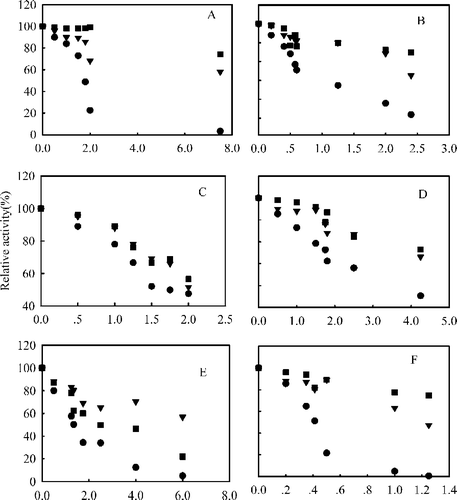
Table II. IC50 values of extracts of six species of Aceraceous plants for the FAS overall reaction and ketoacyl reduction reaction, and kobs (min−1) values.
Figure 2 Kinetic time courses of inhibition of the overall reaction in the presence of the extracts of six species of Acer:(○) Acer platanoides, (▴) Acer pseudoplatanus, (*) Acer tataricum,( × ) Acer campestre, (♦) Acer truncatum, and (▪) Acer capillipes. The insert is a plot of ln R.A.(relative activity) versus time calculated from Figure1 data (Acer platanoides). The FAS solution (0.6μM) was mixed with the extract (0.5 μg/mL) and the aliquots were assayed for remaining activity at the indicated time intervals.
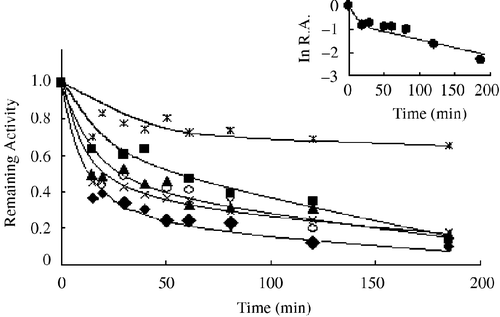
Figure 3 Lineweaver-Burk plot of the inhibition of the overall reaction of FAS by A. platanoides extracts. The concentration of extract in the reaction system was 0 (0), 0. 25 μg/mL (1), 0.5 μg/mL (2), and 0.75 μg/mL (3). The FAS concentration was 0.012μM, and the fixed concentrations of NADPH and Malonyl-CoA were 32 and 10μM, respectively. The reaction rate was the concentration of NADPH per min consumed in the overall reaction.
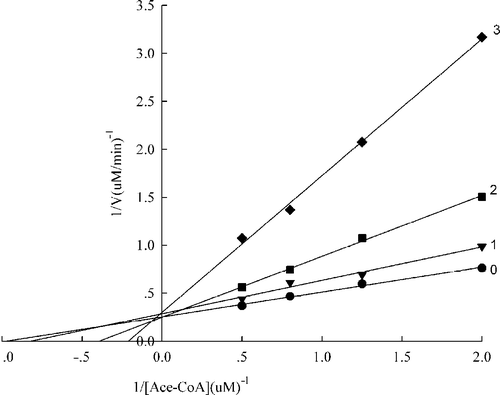
Figure 4 Lineweaver-Burk plot of the inhibition of the overall reaction of FAS by A. platanoides extract. The concentration of extract in the reaction system was 0 (0), 0. 25 μg/mL (1), 0.5 μg/mL (2), and 0.75 μg/mL (3). The FAS concentration was 0.012μM, and the fixed concentrations of Malonyl-CoA and Acetyl-CoA were 10 and 2.5μM, respectively. The reaction rate was the concentration of NADPH per min consumed in the overall reaction.
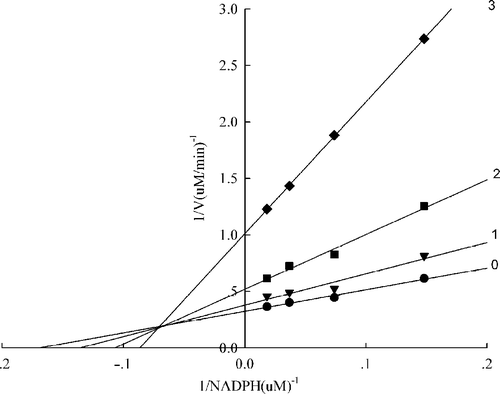
Figure 5 Lineweaver-Burk plot of the inhibition of the overall reaction of FAS by A. platanoides extract. The concentration of extract in the reaction system was 0 (0), 0. 25 μg/mL (1), 0.5 μg/mL (2), and 0.75 μg/mL (3). The FAS concentration was 0.012μM, and the fixed concentrations of NADPH and Acetyl-CoA were 32 and 2.5μM, respectively. The reaction rate was the concentration of NADPH per min consumed in the overall reaction.
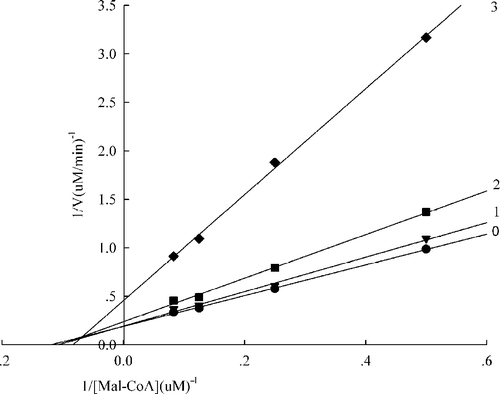
Figure 6 Lineweaver-Burk plot of the inhibition of the overall reaction of FAS by A. campestre extract. The concentration of extract in the reaction system was 0 (0), 0. 2 μg/mL (1), 0.4 μg/mL (2), and 0.5 μg/mL (3). The FAS concentration was 0.012μM, and the fixed concentrations of NADPH and Malonyl-CoA were 32 and 10μM, respectively. The reaction rate was the concentration of NADPH per min consumed in the overall reaction.
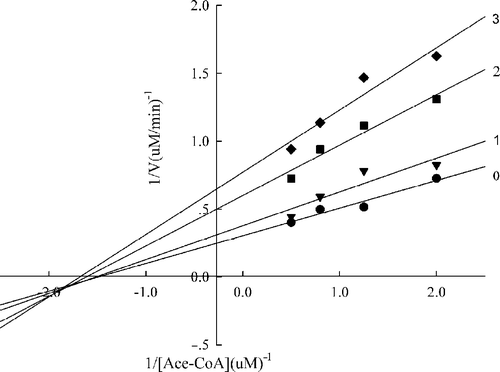
Figure 7 Lineweaver-Burk plot of the inhibition of the overall reaction of FAS by A. campestre extracts.The concentration of extracts in the reaction system was 0 (0), 0. 2 μg/mL (1), 0.4 μg/mL (2), and 0.5 μg/mL (3). The FAS concentration was 0.012μM, and the fixed concentrations of NADPH and Acetyl-CoA were 32 and 2.5μM, respectively. The reaction rate was the concentration of NADPH per min consumed in the overall reaction.

Figure 8 Lineweaver-Burk plot of the inhibition of the overall reaction of FAS by extracts.The concentration of extracts in the reaction system was 0 (0), 0. 2 μg/mL (1), 0.4 μg/mL (2), and 0.5 μg/mL (3). The FAS concentration was 0.012μM, and the fixed concentrations of Malonyl-CoA and Acetyl-CoA were 10 and 2.5μM, respectively. The reaction rate was the concentration of NADPH per min consumed in the overall reaction.
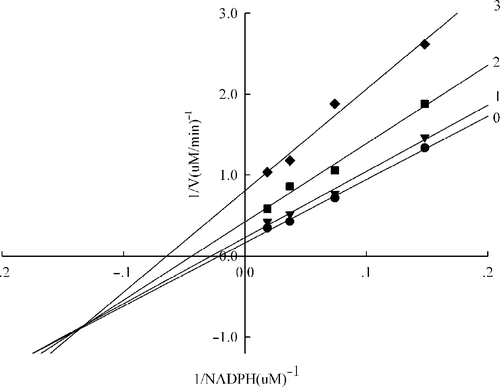
Table III. The inhibition types for the extracts from Aceraceous plants against the FAS overall reaction.
Table IV. The IC50 of the extracts of five species of Acer against various cancer cells.